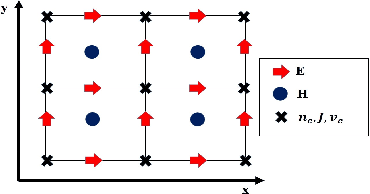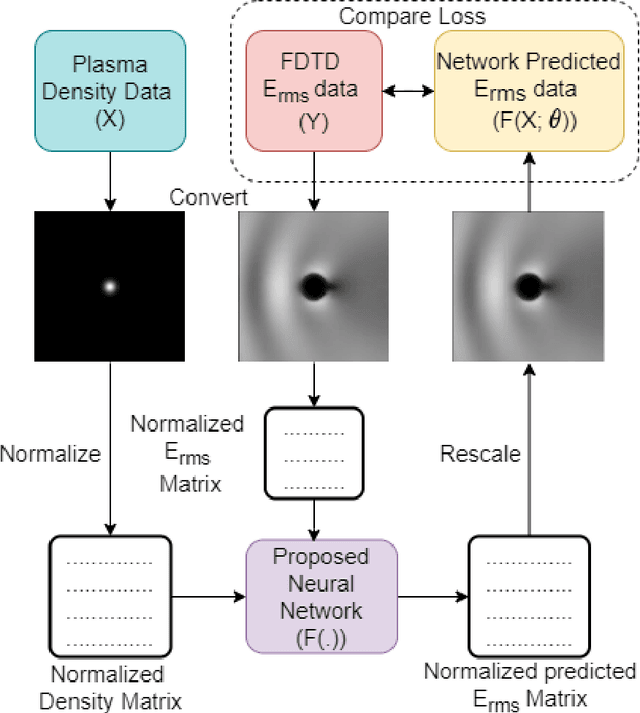Pratik Ghosh
Deep Learning assisted microwave-plasma interaction based technique for plasma density estimation
Apr 28, 2023Abstract:The electron density is a key parameter to characterize any plasma. Most of the plasma applications and research in the area of low-temperature plasmas (LTPs) is based on plasma density and plasma temperature. The conventional methods for electron density measurements offer axial and radial profiles for any given linear LTP device. These methods have major disadvantages of operational range (not very wide), cumbersome instrumentation, and complicated data analysis procedures. To address such practical concerns, the article proposes a novel machine learning (ML) assisted microwave-plasma interaction based strategy which is capable enough to determine the electron density profile within the plasma. The electric field pattern due to microwave scattering is measured to estimate the density profile. The proof of concept is tested for a simulated training data set comprising a low-temperature, unmagnetized, collisional plasma. Different types of Gaussian-shaped density profiles, in the range $10^{16}-10^{19}m^{-3}$, addressing a range of experimental configurations have been considered in our study. The results obtained show promising performance in estimating the 2D radial profile of the density for the given linear plasma device. The performance of the proposed deep learning based approach has been evaluated using three metrics- SSIM, RMSLE and MAPE. The favourable performance affirms the potential of the proposed ML based approach in plasma diagnostics.
Deep Learning Architecture Based Approach For 2D-Simulation of Microwave Plasma Interaction
Jun 02, 2022



Abstract:This paper presents a convolutional neural network (CNN)-based deep learning model, inspired from UNet with series of encoder and decoder units with skip connections, for the simulation of microwave-plasma interaction. The microwave propagation characteristics in complex plasma medium pertaining to transmission, absorption and reflection primarily depends on the ratio of electromagnetic (EM) wave frequency and electron plasma frequency, and the plasma density profile. The scattering of a plane EM wave with fixed frequency (1 GHz) and amplitude incident on a plasma medium with different gaussian density profiles (in the range of $1\times 10^{17}-1\times 10^{22}{m^{-3}}$) have been considered. The training data associated with microwave-plasma interaction has been generated using 2D-FDTD (Finite Difference Time Domain) based simulations. The trained deep learning model is then used to reproduce the scattered electric field values for the 1GHz incident microwave on different plasma profiles with error margin of less than 2\%. We propose a complete deep learning (DL) based pipeline to train, validate and evaluate the model. We compare the results of the network, using various metrics like SSIM index, average percent error and mean square error, with the physical data obtained from well-established FDTD based EM solvers. To the best of our knowledge, this is the first effort towards exploring a DL based approach for the simulation of complex microwave plasma interaction. The deep learning technique proposed in this work is significantly fast as compared to the existing computational techniques, and can be used as a new, prospective and alternative computational approach for investigating microwave-plasma interaction in a real time scenario.
 Add to Chrome
Add to Chrome Add to Firefox
Add to Firefox Add to Edge
Add to Edge